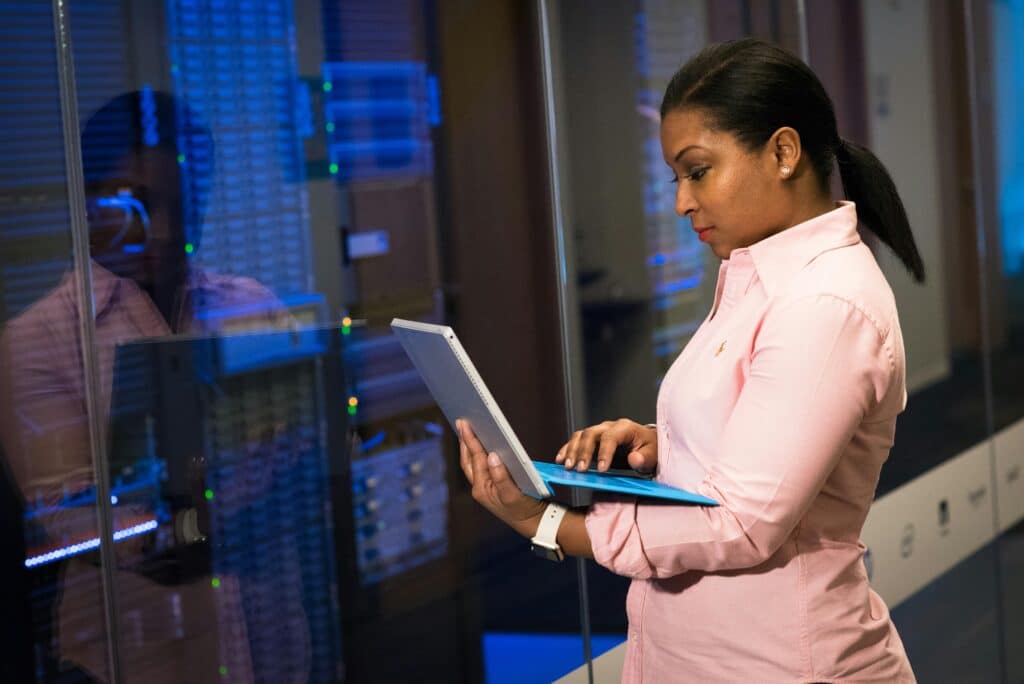Imagine walking into your office tomorrow and being introduced to a new team member who never takes sick days, works around the clock, processes information at lightning speed, and never needs coffee breaks.
This isn’t science fiction anymore. Digital employees, powered by artificial intelligence, are already integrating into workplaces across industries, creating what experts call “hybrid human-agent teams” where collaboration transcends the boundaries between human and artificial intelligence.
The Invisible Revolution
According to Anton Alikov, CEO of Arctic Ventures, we’re witnessing the emergence of an “invisible workforce” that’s fundamentally changing business operations. Microsoft’s 2025 Work Trend Index Annual Report identifies “frontier firms” that fully integrate AI agents into their processes, leveraging what they call “intelligence on tap.”
The numbers tell a compelling story: Boston Consulting Group forecasts the AI agent market will grow by 45% annually, reaching $52.1 billion by 2030. This isn’t just about automation—it’s about creating entirely new models of work.
Defining Digital Colleagues
So what exactly is a digital employee? Unlike simple rule-based bots that follow basic instructions, these AI-powered team members represent sophisticated software structures designed to autonomously perform tasks traditionally handled by trained professionals.
As Alikov explains, “well-designed AI employees are able to learn and adapt to a complex environment and make decisions similar to humans.” They combine multiple technologies—machine learning, large language models, deep learning, and cognitive computing—to “think” and propose solutions to complex problems.
The most impressive aspect? Their versatility. Digital employees can seamlessly transition between roles in customer service, financial management, human resources, and beyond, often supporting multiple departments simultaneously.
The Collaboration Model
Here’s where it gets interesting: digital employees aren’t replacing human workers—they’re partnering with them. Through natural language processing, these AI agents communicate effectively with both customers and staff, detecting context and providing relevant responses that feel surprisingly natural.
The collaborative approach transforms human roles rather than eliminating them. As Alikov notes, “this collaborative approach can significantly increase team productivity by allowing employees to focus on strategic priorities while the AI program performs routine tasks.”
Humans evolve from narrow specialists into diverse professionals with broader knowledge bases, while AI handles the repetitive, data-intensive work that often bogs down productivity.
Perfect Timing for Small Business
Small businesses are emerging as the biggest beneficiaries of this digital workforce revolution. They face persistent challenges that digital employees can address immediately:
- Talent Acquisition Struggles: Finding and retaining qualified people becomes less critical when AI can handle many functions.
- 24/7 Service Demands: Digital employees never sleep, enabling round-the-clock customer support
- Scaling Challenges: Growth no longer requires proportional increases in human headcount.
These advantages are transforming small businesses into competitive “frontier firms” that can compete with larger organizations through enhanced efficiency and capabilities.
Implementation Reality
Modern AI platforms are making digital employee integration surprisingly accessible. Low-code and no-code solutions offer plug-and-play deployment options, enabling immediate benefits without extensive technical expertise.
The key lies in the collaborative framework: humans provide training, oversight, and feedback while AI agents handle execution. This partnership model allows organizations to maintain quality control while dramatically expanding capacity.
Navigating the Challenges
Digital employees aren’t without limitations. Alikov identifies several key challenges organizations must address:
- Security Vulnerabilities: AI systems require robust protection against data breaches and cyber threats.
- Emotional Intelligence Gaps: Complex interpersonal situations still require human insight and empathy.
- Over-Reliance Risks: Excessive trust in AI outputs can lead to insufficient human oversight.
- Legacy System Integration: Existing technology infrastructure may require significant updates.
Successfully implementing digital employees requires acknowledging these limitations while building frameworks to address them proactively.
The Future of Work
The question that concerns many is whether digital employees will completely replace human workers. Alikov’s perspective is reassuring: “Despite their impressive capabilities, AI employees are not able to completely replace people. Most likely, we will never see fully automated and peopleless organizations.”
Instead, we’re moving toward a future where human and digital employees work in tandem, leveraging their unique strengths to create powerful synergies. History suggests that while new technologies may eliminate some jobs, they typically create even more opportunities in emerging areas.
Strategic Implementation
For organizations considering digital employees, the approach should focus on augmentation rather than replacement. Key considerations include:
- Identify Routine Tasks: Start with repetitive, rule-based processes that don’t require complex human judgment.
- Maintain Human Oversight: Establish frameworks for monitoring and controlling AI outputs.
- Invest in Training: Help human employees develop skills that complement AI capabilities.
- Plan for Integration: Ensure digital employees enhance rather than disrupt existing workflows
Redefining Collaboration
Digital employees represent more than technological advancement—they’re redefining what collaboration means in modern workplaces. The most successful organizations will be those that view AI agents not as replacements but as powerful partners in achieving productivity, innovation, and job satisfaction.
As we enter this new era of work, the question isn’t whether digital employees will become part of your team—it’s how quickly you’ll embrace the partnership that could transform your organization’s potential.
The invisible workforce is becoming visible. Are you ready to meet your new colleagues?
Ready to explore how digital employees could transform your organization? Start small, think strategically, and prepare for the future of collaborative work.
Source: Alikov, A. (2025, June 30). “Digital Employees: The Invisible Workforce Of The Future.” Forbes.
